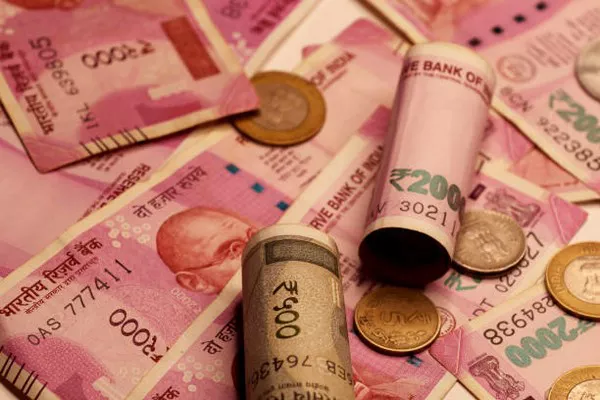The Indian rupee (INR) is the official currency of the Republic of India, serving as a fundamental unit of exchange in the country’s vast and dynamic economy. As with any currency, the Indian rupee possesses unique characteristics and challenges that influence its performance both domestically and on the global stage. In this article, we delve into the disadvantages associated with the Indian rupee, examining the economic, social, and geopolitical factors that impact its stability and value.
Economic Volatility and Inflation
One of the primary challenges faced by the Indian rupee is its susceptibility to economic volatility and inflationary pressures. India, as a developing economy, is subject to fluctuations in global markets, which can impact the value of its currency. Inflation rates in India have historically been higher compared to developed economies, eroding the purchasing power of the rupee over time. This inflationary pressure can lead to increased costs of goods and services, affecting both consumers and businesses.
The Reserve Bank of India (RBI) plays a crucial role in managing inflation through monetary policies, but persistent inflationary trends can weaken investor confidence in the rupee. Foreign investors may perceive higher inflation as a risk factor, potentially leading to capital outflows and currency depreciation.
Current Account Deficit (CAD)
Another significant challenge for the Indian rupee is the persistent current account deficit (CAD). A CAD occurs when a country’s total imports of goods, services, and investments exceed its total exports. India has often struggled with a sizable CAD due to high oil imports, substantial gold purchases, and a trade deficit in goods.
A large CAD exerts pressure on the rupee, as it requires continuous inflows of foreign capital to finance the deficit. Foreign investors’ perceptions of the CAD can impact their confidence in the Indian economy, influencing currency valuations. In times of global economic uncertainty, a widening CAD can exacerbate currency depreciation, affecting import costs and overall economic stability.
External Dependencies and Oil Prices
The Indian economy heavily relies on imported crude oil to meet its energy demands. Fluctuations in global oil prices directly impact India’s trade balance and currency value. High oil prices lead to increased import bills, widening the CAD and putting downward pressure on the rupee.
Since India imports a substantial portion of its oil requirements, any geopolitical tensions or supply disruptions in major oil-producing regions can disrupt India’s economy and currency stability. The vulnerability to external factors underscores the rupee’s susceptibility to global market dynamics beyond domestic control.
Exchange Rate Vulnerability
The exchange rate of the Indian rupee against major currencies like the US dollar is subject to market forces and speculative activities. While the RBI intervenes to stabilize the exchange rate through foreign exchange reserves and policy measures, the rupee remains vulnerable to sudden fluctuations and speculative attacks.
Speculative trading and global macroeconomic developments can cause rapid swings in the rupee’s value, impacting trade balances, inflation, and investor sentiment. The volatility in exchange rates poses challenges for businesses engaged in international trade and can deter foreign direct investment (FDI) due to perceived risks associated with currency fluctuations.
Impact on External Debt
India’s external debt, comprising both public and private borrowings from foreign sources, is denominated in various currencies. A weakening rupee increases the cost of servicing external debt, as more rupees are required to repay foreign currency-denominated obligations.
A depreciating rupee can strain the government’s fiscal position, increase borrowing costs for businesses, and lead to a vicious cycle of currency depreciation and rising debt burdens. Managing external debt becomes more challenging during periods of currency depreciation, requiring prudent fiscal and monetary policies to maintain stability and investor confidence.
Socioeconomic Implications
The disadvantages associated with the Indian rupee have broader socioeconomic implications for the country’s population. Currency depreciation can lead to higher inflation, reducing the purchasing power of households and affecting standards of living. Imported goods become more expensive, impacting consumer budgets and potentially causing social unrest.
Furthermore, a weak currency can deter foreign investment and technology transfer, hindering economic growth and employment generation. The government must strike a balance between promoting export competitiveness and managing the adverse effects of currency depreciation on domestic industries and consumers.
Geopolitical Factors
Geopolitical developments and global trade tensions can significantly impact the value of the Indian rupee. Uncertainties surrounding international trade agreements, diplomatic relations, and geopolitical conflicts can trigger capital flight and currency volatility.
India’s geopolitical positioning in South Asia and its relations with neighboring countries and global powers influence investor sentiment and capital flows. Any perceived geopolitical instability can amplify currency risks, affecting investment decisions and economic prospects.
Policy Challenges and Reforms
Addressing the disadvantages associated with the Indian rupee requires a multifaceted approach involving monetary, fiscal, and structural reforms. The RBI plays a pivotal role in maintaining currency stability through proactive monetary policies, including interest rate adjustments and foreign exchange market interventions.
Structural reforms aimed at improving export competitiveness, reducing import dependence, and promoting domestic manufacturing can help mitigate the impact of currency fluctuations. Strengthening fiscal discipline, enhancing productivity, and attracting long-term foreign investment are essential for sustaining economic growth and currency stability.
Conclusion
In conclusion, the Indian rupee faces several disadvantages stemming from economic, social, and geopolitical factors. Currency volatility, inflationary pressures, external dependencies, and geopolitical uncertainties contribute to challenges in maintaining currency stability and value. Addressing these disadvantages requires coordinated efforts from policymakers, regulators, and market participants to implement prudent policies, enhance economic resilience, and promote sustainable growth. Despite the challenges, India’s dynamic economy and potential for growth offer opportunities for mitigating currency risks and fostering long-term economic prosperity.


